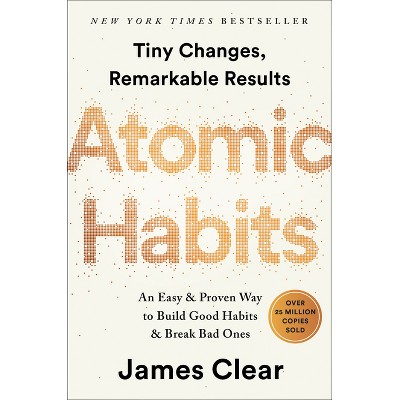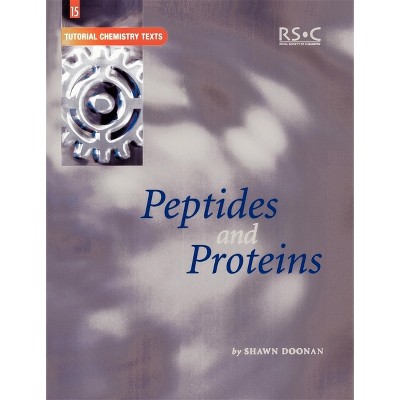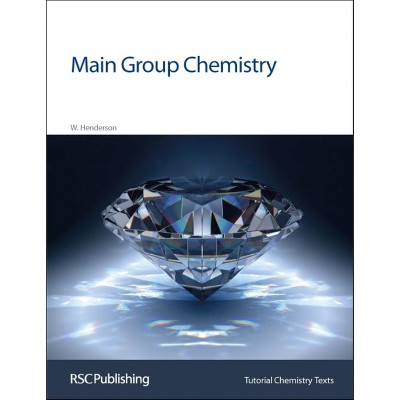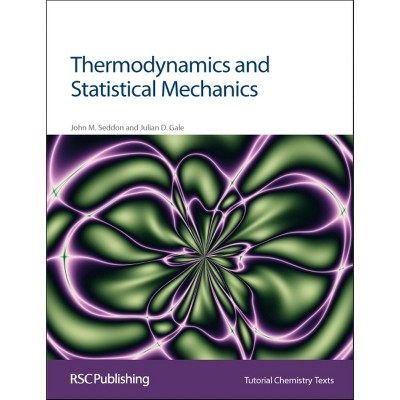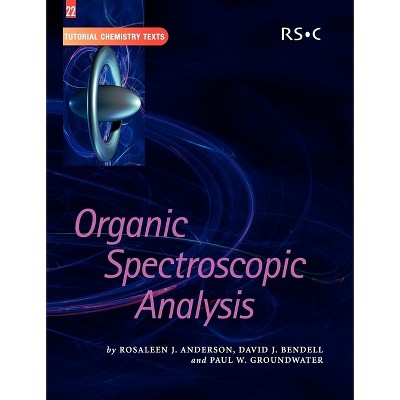Biophysical Chemistry - (Tutorial Chemistry Texts) 2nd Edition by Alan Cooper (Paperback)

About this item
Highlights
- Biophysical Chemistry covers the physical chemistry of biological macromolecules and the experimental techniques used to study them.
- About the Author: Alan Cooper is a Professor of Biophysical Chemistry in the Chemistry Department at Glasgow University, Glasgow, UK.
- 244 Pages
- Science, Life Sciences
- Series Name: Tutorial Chemistry Texts
Description
About the Book
This book will be ideal for early undergraduates studying chemical or physical sciences and will act as a basis for more advanced study.
Book Synopsis
Biophysical Chemistry covers the physical chemistry of biological macromolecules and the experimental techniques used to study them. Topics covered include: an introduction to biological molecules; spectroscopy, mass spectrometry and hydrodynamics of macromolecules; a ""bluffer's guide"" to molecular thermodynamics; biomolecular kinetics; chromatography and electrophoresis; and single-molecule methods. The easily digestible, pragmatic approach captures the reader with the fascinating challenges the subject poses for theoretical and experimental scientists. This book will be ideal for early undergraduates studying chemical or physical sciences and will act as a basis for more advanced study. Students in other areas of biological sciences will appreciate the less intimidating approach to physical chemistry as demonstrated here. Ideal for the needs of undergraduate chemistry students, Tutorial Chemistry Texts is a major series consisting of short, single topic or modular texts concentrating on the fundamental areas of chemistry taught in undergraduate science courses. Each book provides a concise account of the basic principles underlying a given subject, embodying an independent-learning philosophy and including worked examples.
From the Back Cover
This fully revised and expanded second edition of a highly popular book covers the physical chemistry of biological macromolecules and how this may be studied using up-to-date instrumental techniques. The experimental approach used here reflects the way science actually works, especially in a developing field that does not yet have the rigorous theoretical understanding sometimes found in more mature areas of chemistry. This makes biophysical chemistry both fascinating and fun, posing interesting challenges for both theoretical and experimental scientists. This updated edition includes a new chapter on diffraction and microscopy, covering recent developments in a range of biomolecular imaging techniques. The section on circular dichroism has been fully revised to conform to more up-to-date convention and the section on multi-dimensional NMR has been enhanced. These revisions give the student an overview of the range of techniques available, together with the underlying physical basis, sufficient to act as a platform for more detailed treatment elsewhere. Other updates include recent developments arising from genome projects and a new section on foams and surfactants reflecting recent advances in biofoams, with topical marginal notes and a brief explanation of surface tension. The note about units has been expanded to include other commonly used non-SI units (eg the calorie). The "References" and "Further Reading" sections have been updated for all chapters and the marginal notes revised and amended, with new background material added where appropriate. The level adopted in this tutorial text is suitable for early undergraduate years in chemical or physical sciences. However, since this interdisciplinary topic is often postponed to later years, the book can also act as a basis for more advanced study. Students in other areas of the biological sciences will also appreciate the less intimidating approach to physical chemistry in the book.Review Quotes
"Will be of great help to early undergraduates in first years of physical, chemical, and biological studies and specialised scientists in specific fields of the life sciences."
Ideal for early undergraduates studying chemical or physical sciences and will act as a basis for more advanced study. Students in other areas of biological sciences will appreciate the less intimidating approach to physical chemistry as demonstrated here.
About the Author
Alan Cooper is a Professor of Biophysical Chemistry in the Chemistry Department at Glasgow University, Glasgow, UK. After obtaining a first class honours degree in physics from Manchester University, he gained a diploma for Advanced Studies in Science (with Distinction) on the calculation of dispersion forces and optical properties of helical polynucleotides and a PhD in Biophysics on the thermodynamics of assembly and stability of collagen - both from Manchester University. Since then he has been a SRC Research Fellow at the Laboratory of Molecular Biophysics, Oxford University and a Junior Research Fellow, Wolfson College, Oxford as well as a NIH Research Fellow on the Pathology of Membranes Training Program in the department of Chemistry, Yale University, USA, before his return to Glasgow University as a Lecturer in Physical Chemistry, then Senior Lecturer, Reader and finally Professor. Until 2009, he was the Principal Editor of the Biophysical Chemistry journal and is on the Editorial boards of the European Biophysics Journal, Journal of the Iranian Chemical Society and BMC Biochemistry. He is an external assessor for various European universities and a member of the Molecular Biosciences Foresight Working Party, the ESF Working Party on post-genome biophysical studies and is on the management committee of COST D22 protein-lipid interaction. His research interests include biophysical chemistry, microcalorimetry; thermodynamics of protein folding, misfolding, aggregation and interactions; biomaterials chemistry, protein foams, nematode polyproteins; peptide-antibiotic interactions, and he has also had over 150 full papers published.


